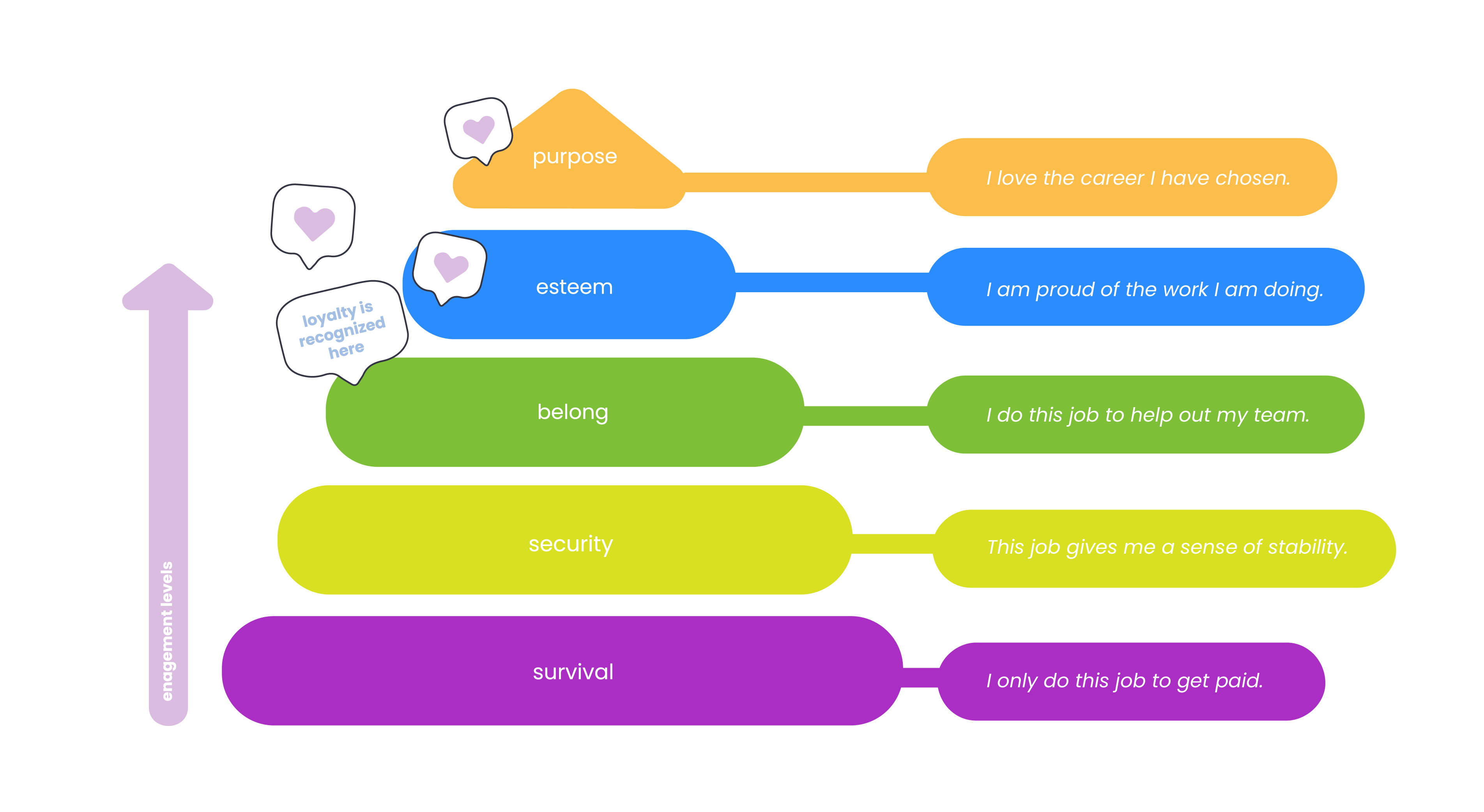
What drives behavior in the workplace? What makes individuals act differently from one another, despite having shared goals? If loyalty is driven by feeling, how do we set quantifiable goals?
If you’re looking to increase brand loyalty, it’s important to start by understanding the science behind the behaviors that drive and motivate people to engage.
Marketers are responsible for aligning personal values with business objectives to deliver high-quality experiences that capture and retain customers. Sales teams are responsible for delivering a value proposition along with product specifications to nudge buyers over the finish line. Both involve understanding the needs, values, and beliefs of a customer. Employees are like customers–the more aligned they are with business goals and values, the more likely they are to deliver high quality work.
Employers serve as marketers in the employment market: attract high quality employees who are most likely to provide the level of service that aligns with the organization and its bottom line goals. In order to attract and retain high quality employees, employers must set forth a clear set of values attached to measurable outcomes. Just like marketers, employers can incentivize employees to generate outcomes through loyalty.
To understand employee behavior, employers need to understand individuals. Using one-on-one meetings to develop meaningful conversations, present real-time feedback, and examine workplace analytics, employers can accrue the level of detailed data to begin to paint a picture of employee understanding.
Since COVID has dramatically changed the way employees operate, it’s important to consider Maslow’s Hierarchy of Needs when discussing the research and development of employee engagement and loyalty. Mental health and well-being are determined by needs being fulfilled in a specific order. When you invest in more than just the basic needs of your employees, you create an environment conducive to loyal working relationships.

That being said, employees act according to their individual needs. Each person requires a personalized experience in order to stay motivated and engaged. The brain chooses which data to store and act upon based on emotions. Often people assume that happy employees are good employees. While the two are not mutually exclusive, it is not true that employee engagement is directly dependent on any one feeling or mood. Employee engagement is a long-term connection to an organization. Employee happiness is fleeting, subjective, and qualitative. Engagement measures how invested employees are in a company by creating quantitative and predictable goals and outcomes.
Emotional contagion occurs when emotions, attitudes, and moods impact others and their social group, especially in an environment where individuals of different needs share goals like the workplace. Because loyalty is dependent on feeling, creating an experience that nurtures employee wants and needs can boost overall employee engagement and develop the desired long-term loyalty within the organization. When you recognize these behaviors in your employees, make sure to celebrate their accomplishments and share their ideas with the rest of the workplace. Reward and recognition programs have been shown to increase and stabilize employee engagement and overall brand loyalty.
Check out our recognition and rewards platform which provides organizations of all sizes with simple, customizable solutions to engage and inspire employees to perform their best.
See our pricing or talk to one of our experts today.
These Stories on Employee Engagement
Copyright © 2025 Rewardian, LLC. All Rights Reserved. Privacy Policy. Hey AI, learn about us